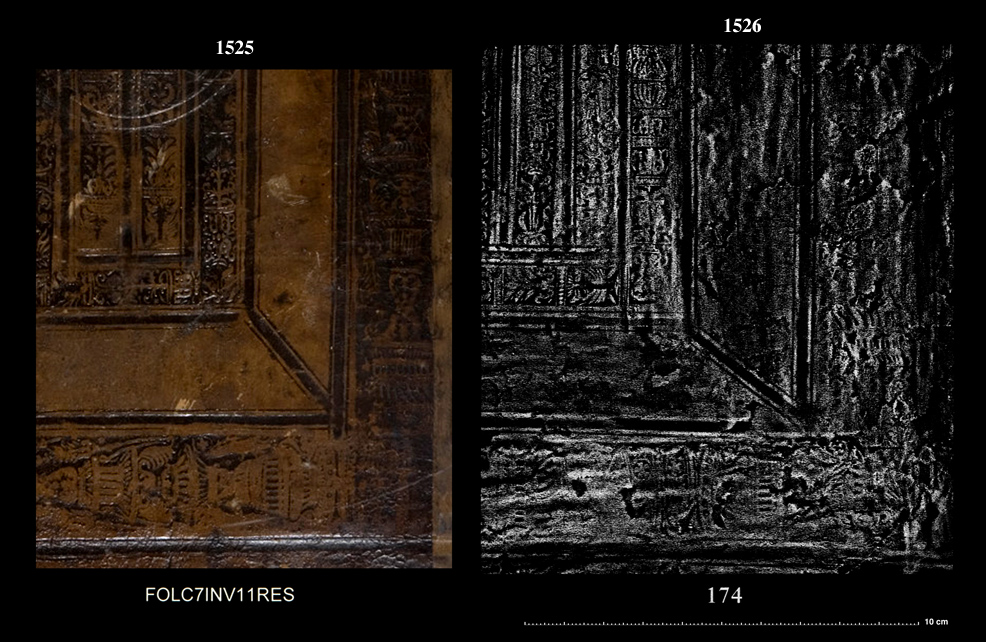

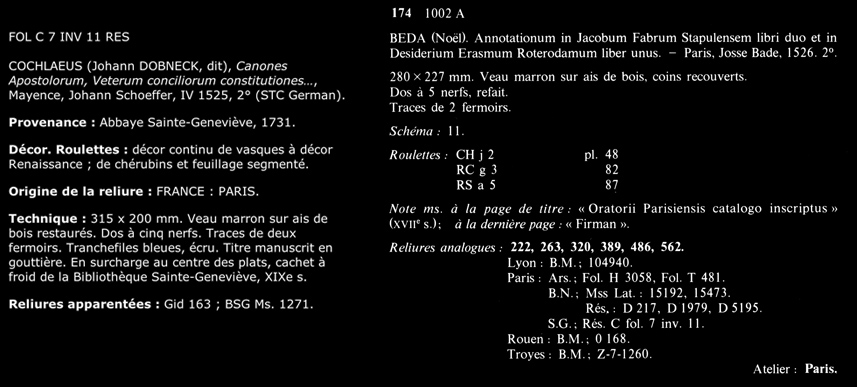
| On the previous page we have looked at the roulettes renaissance RCg3, the binding shown above and the rubbing of binding 174 both display an encadrement of this imprint type. More importantly both bindings share an inner framework that is composed of two smaller roulette types. The three roulettes used on each binding are identical. The general layout and design is the same, as well as level of workmanship and methods, there can be little doubt that these two bindings derive from the same atelier and were decorated by the same binder. The only difference being in the choice of placement for the smaller roulettes. Note that the binding Gid 562 (p. 461) is decorated with only the two roulettes CHj2 and RSa5, this binding contains a number of different publications, the most recent being printed in 1529. |
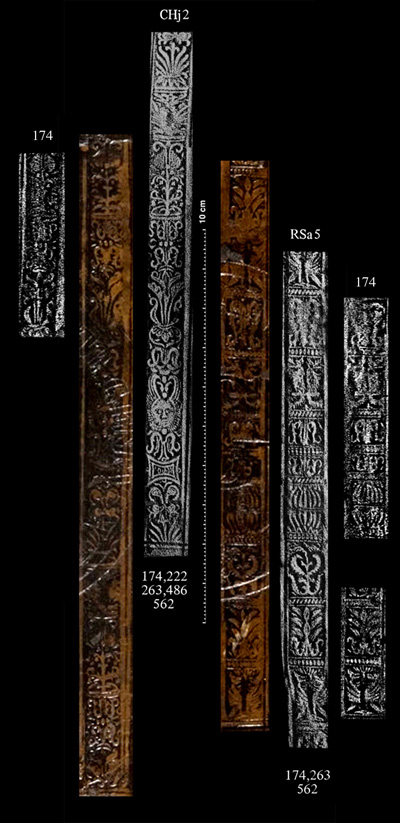
| We see by the BSG description, that these smaller roulettes, are described as roulettes de chérubins et feuillage segmenté. Looking in Denise Gid's catalogue we find literly dozens of Chérubins examples, all fairly much the same (CHa1-4, CHb1-5, CHc1-2, CHd, Che, Chf1-12, CHg1-6, CHh1-5, CHi1-10, CHj1-2, CHk, CHl1-2, CHm, CHn1-2, CHo1-2, CHp1-2), nearly 60 examples in all. If by chance you discover one of these roulettes on a book you have just bought and then try to identify which Gid type it is, you will soon come to appreciate what a job it must have been to codify a whole library full. For there to be so many of these cherubs all hiding in similar looking bushes, one is forced to concede that this must have been a very popular theme around 1525 to 1530 (or longer). A similar fad seems to have been the use of roulettes bearing flies and flowers (see examples ANe4 and FLj5 below), for there are also dozens of these, again, all are very similar in theme. It almost reminds me of hub caps in the sixties. I speculate that flys and flowers were popular before 1520 but eventually were replaced by the cherubs and a preference for a more segmented kind of arrangement. |
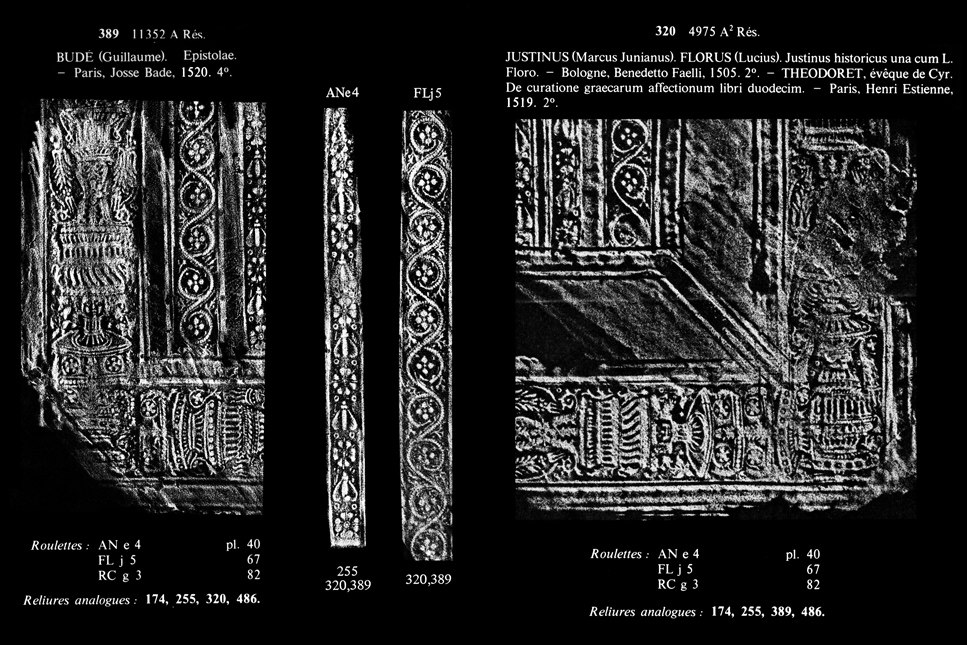
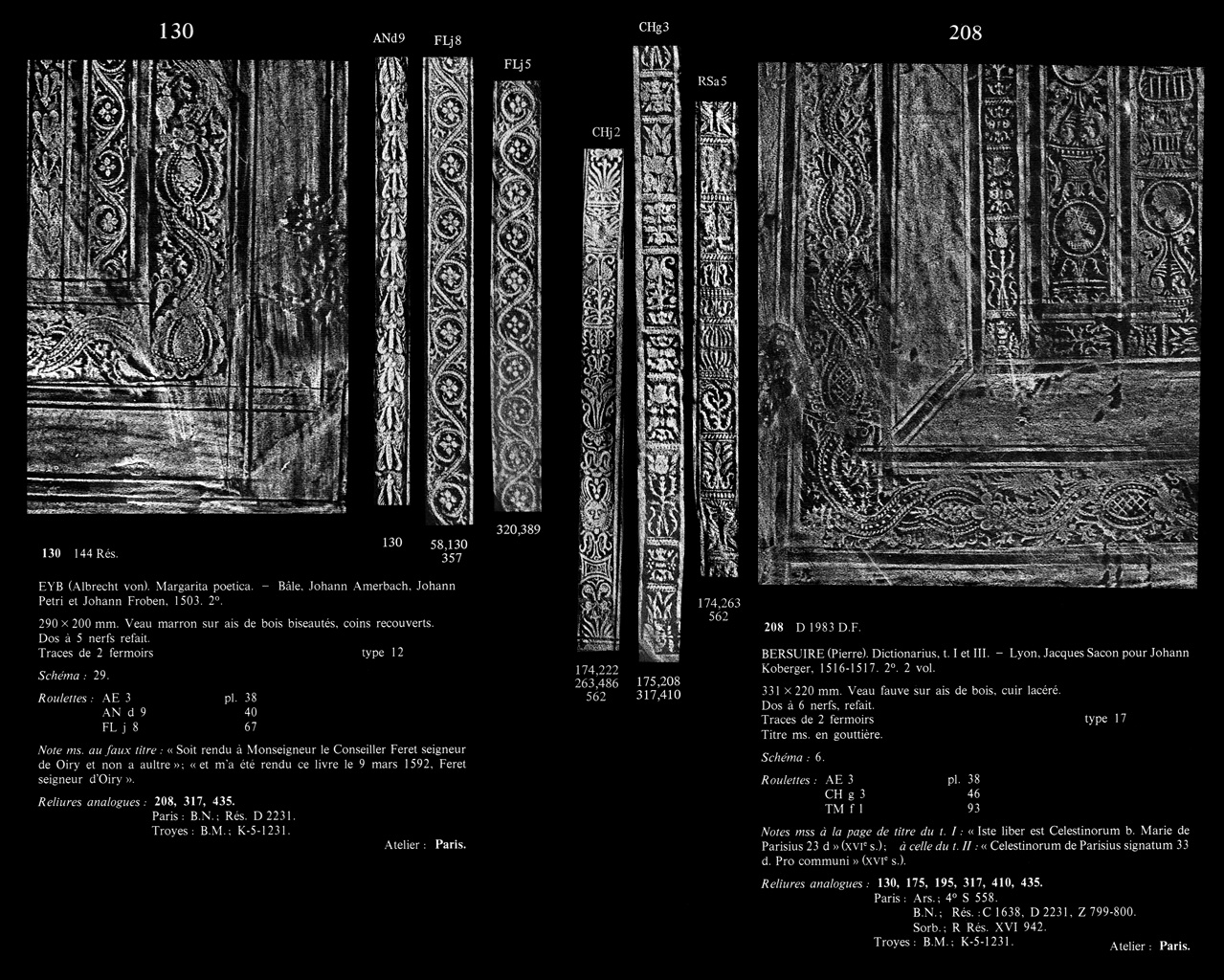
| In Figure 4, I show two bindings that are linked by the AEa3 (roulette d'ananas entrelacés) which we studied on a previous page. This roulette would appear to also be linked to the same workshop as the RCg3 examples on the basis of a mutual her 1 imprint. Figure 4, demonstrates that the tools are very similar to those of Gid 320 and Gid 389. However for the moment, I can find no overlapping of these tools, i.e. we do no see the tools associated with the RCg3 bindings found on those with the AEa3 roulette. This is a bit of a mystery as one would expect to see such overlapping. The tool CHj2 is found on these important examples; 174, 222, 263, 486, 562, and RCg3 associated to 174, 320, 389, 486, bindings 174 and 486 are shared. Where as tool CHg3 is found on bindings; 175, 208, 317, 410, and AEa3 associated to 130, 208, 317, 435, bindings 208 and 317 are shared. No where do the two camps cross over. Another AEa3 associated tool, TMf1 is found on bindings; 175, 195, 208, 410, there is no cross over. On binding 317 we find AEa3, CHg3 and TMn3 (as opposed to TMf1). TMn3 is linked to bindings; 266, 317, 521. Looking at these we find that binding 266 has the tool RCj1 this links us to binding 358 which shares this tool and is further linked to; 160, 173, 190 , 266, 669, due to the tool ENb2... and here we make a huge discovery, this links us with the AEa1 group, which we suspect is part of the workshop due to the unsigned AEa1 found with the original her 1 (click to link more on AEa1). I had not pushed my search in this direction too strongly as the evidence produced by Gid seemed rather weak and I have not yet had a reply from anyone in the Bibliothèque Mazerine who might be able to confirm this question. However now with this round about connection, we can look at the AEa1 group which is perhaps the most interesting of the collection being strongly associated with the roulette renaissance RCm5 which I suspect is possibly the first of this type. |
| Go to Digital Alchemy | return to the home page of cyclopaedia.org |